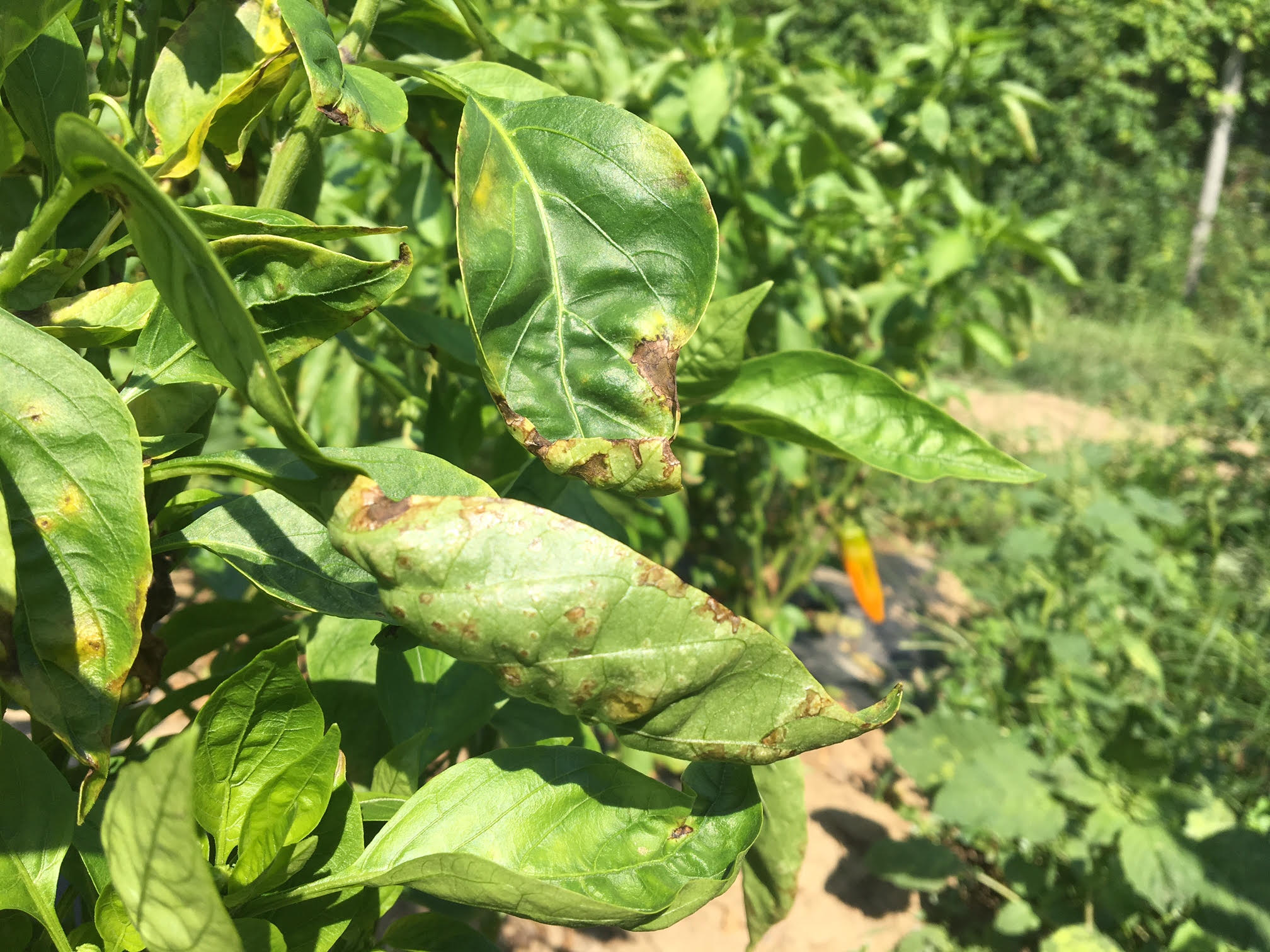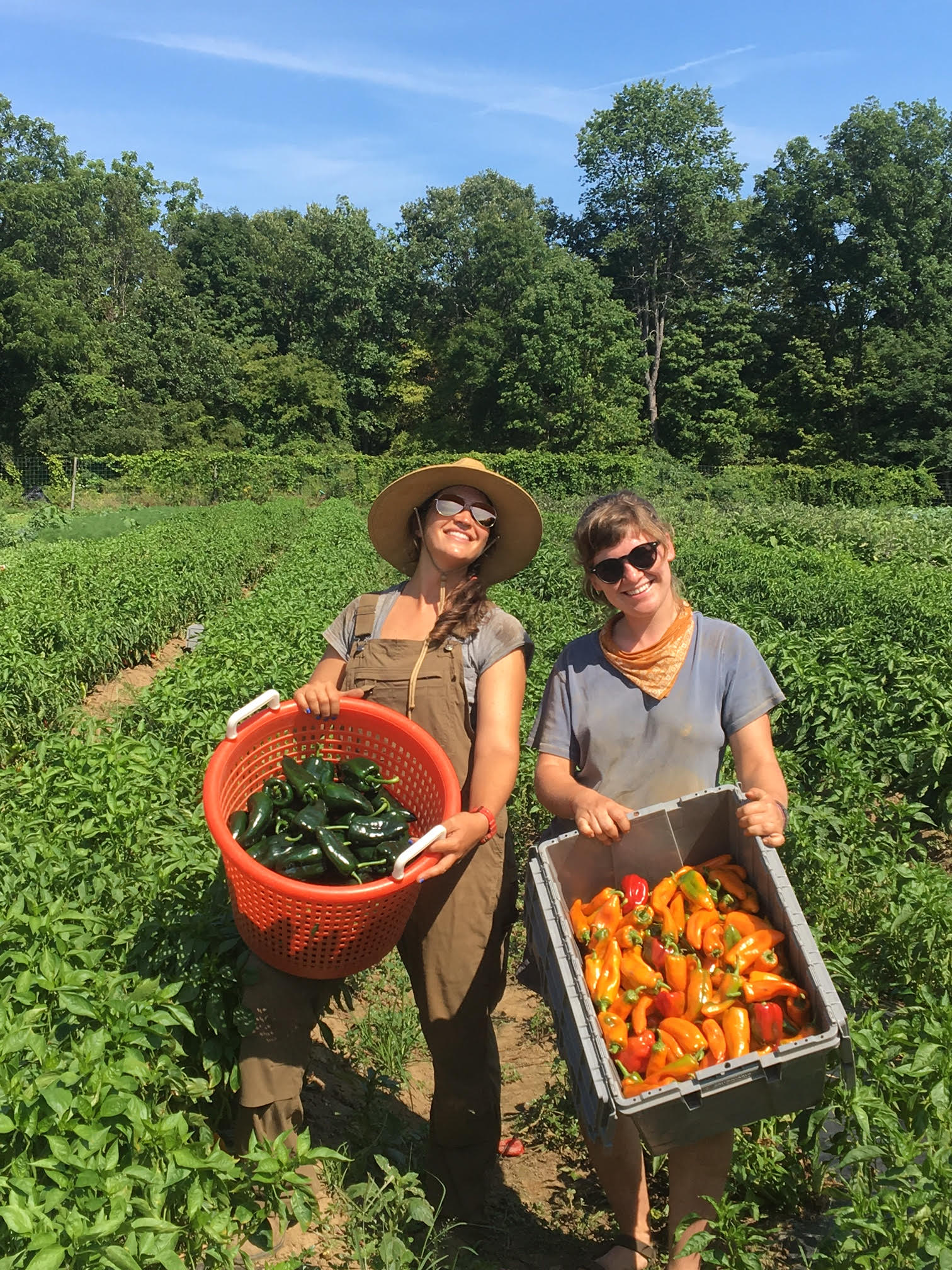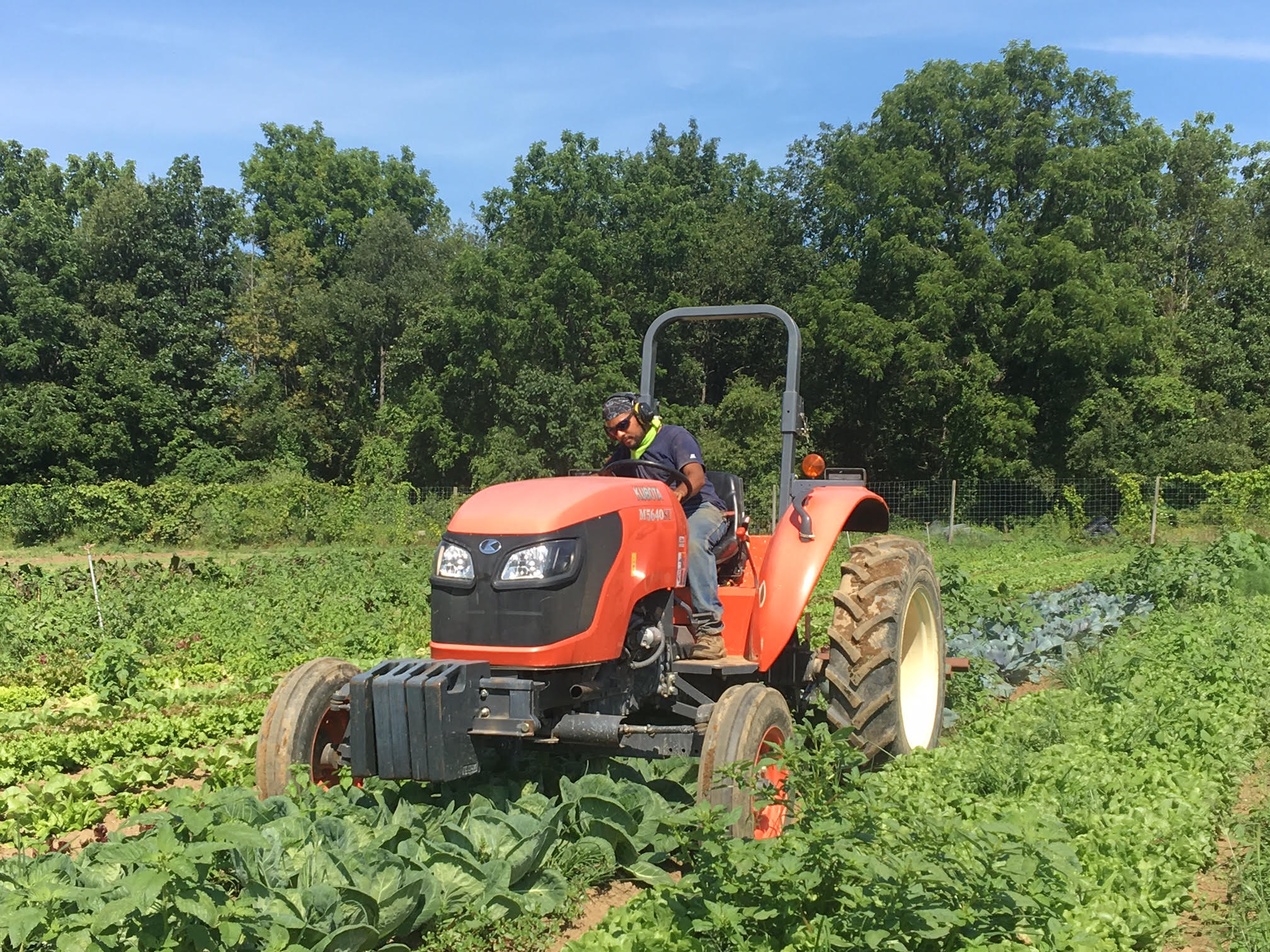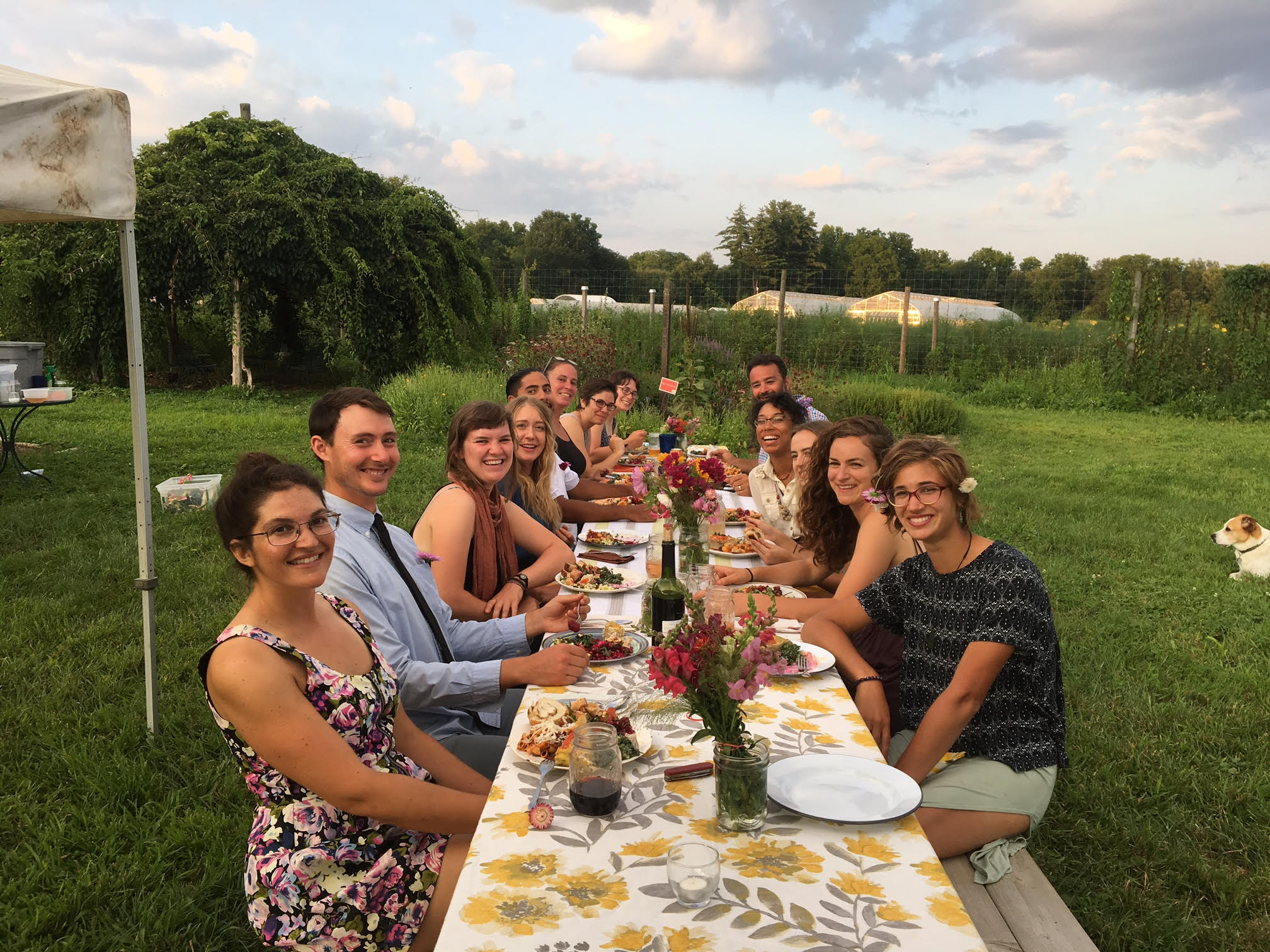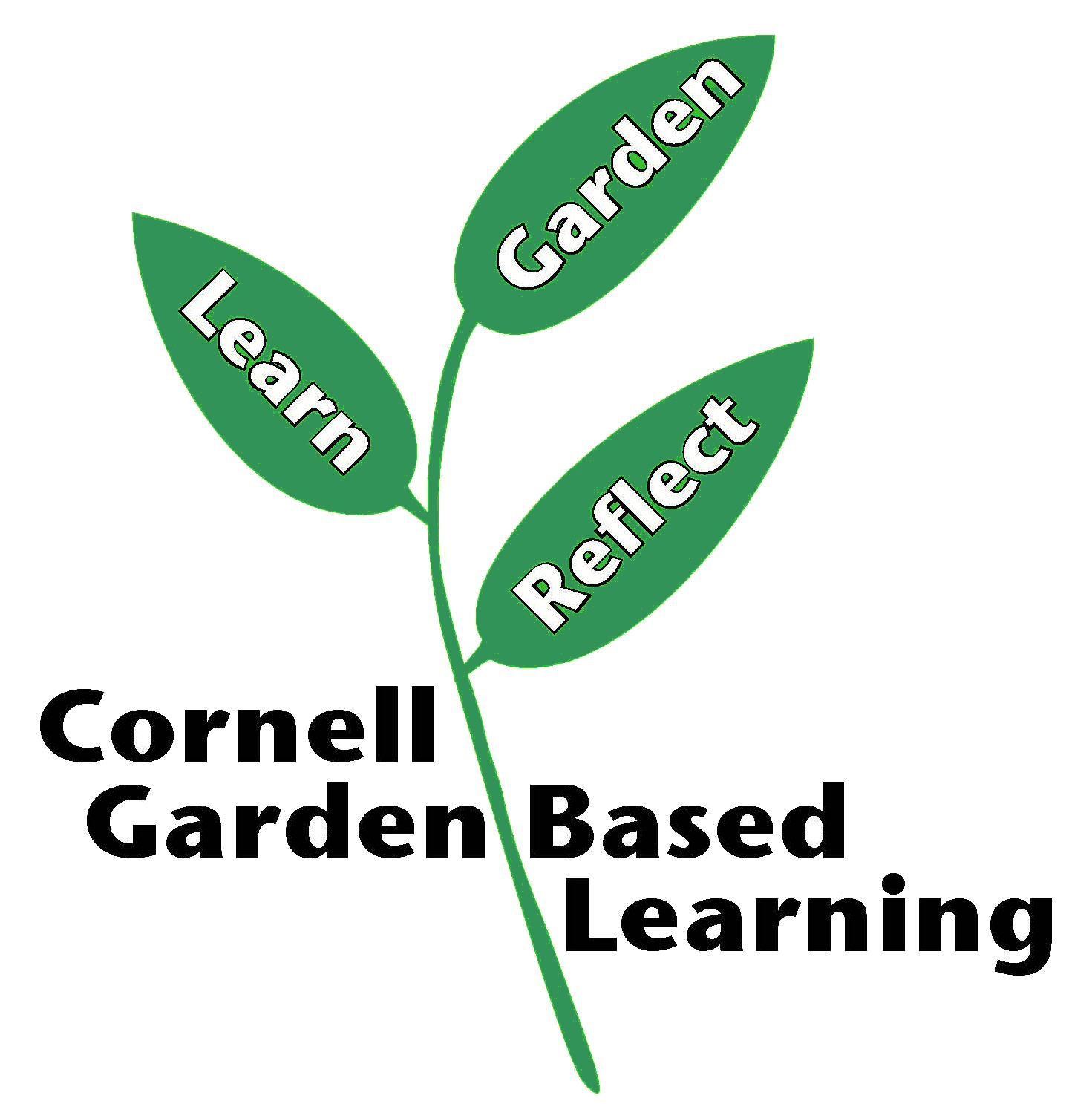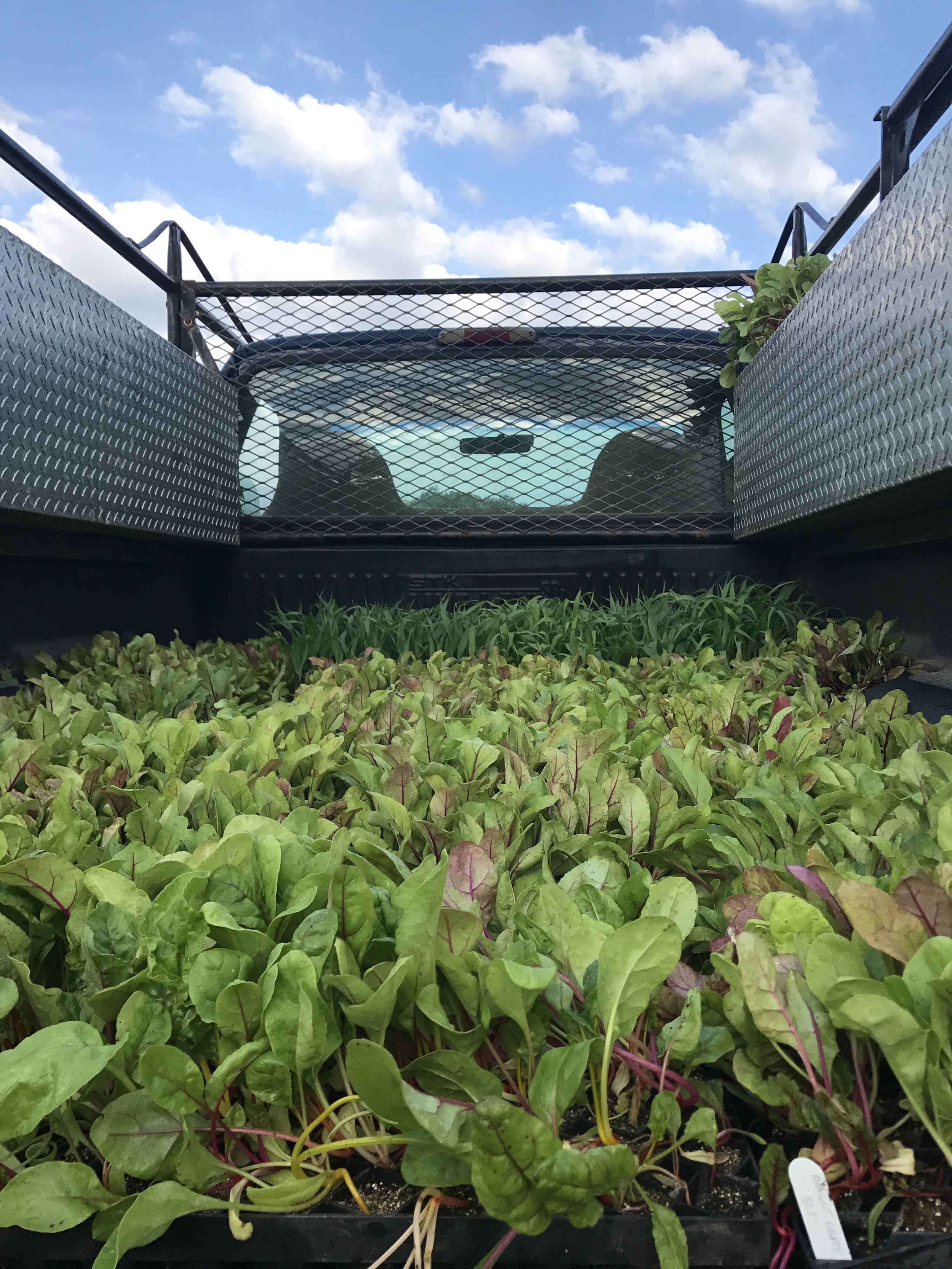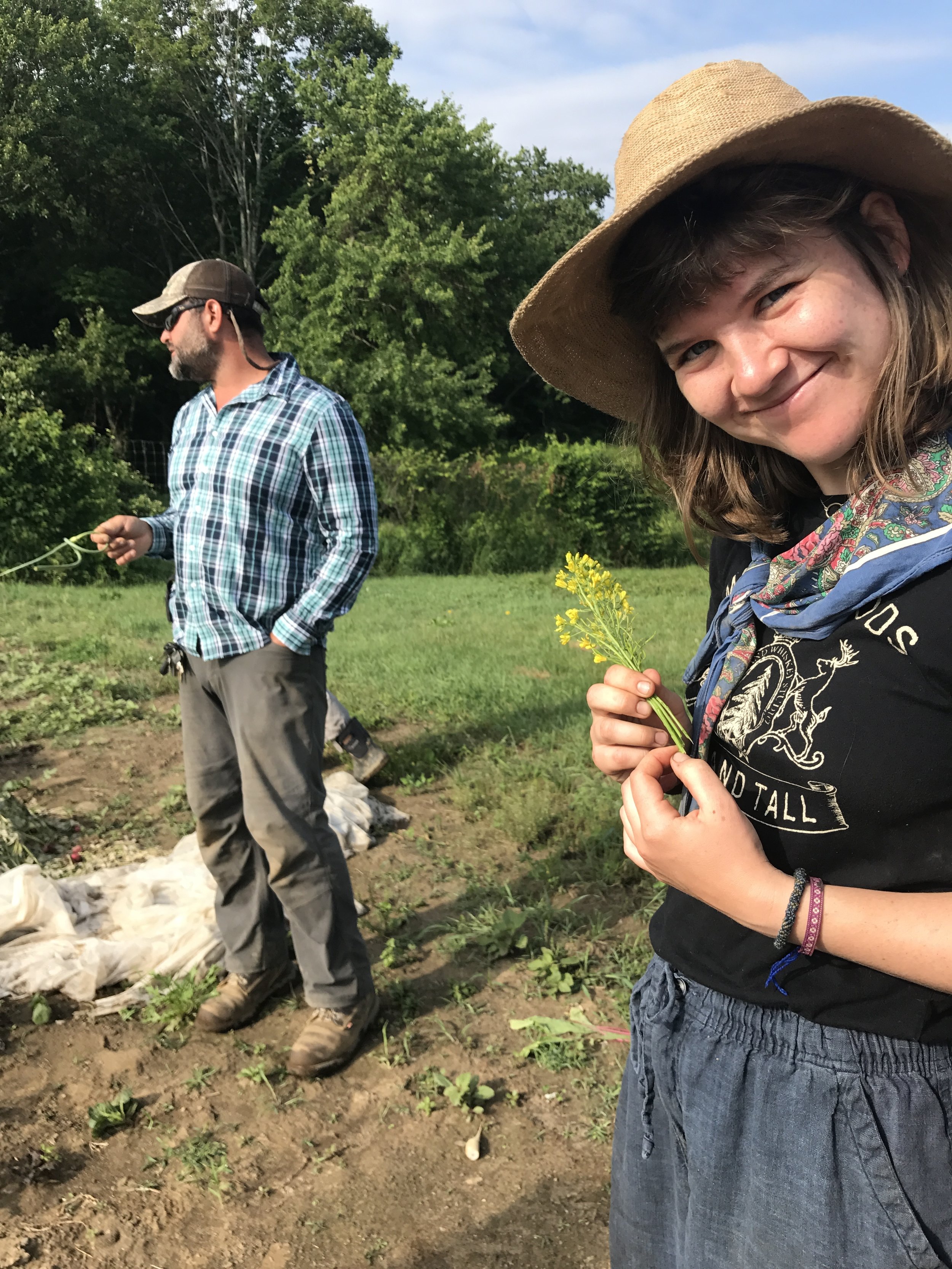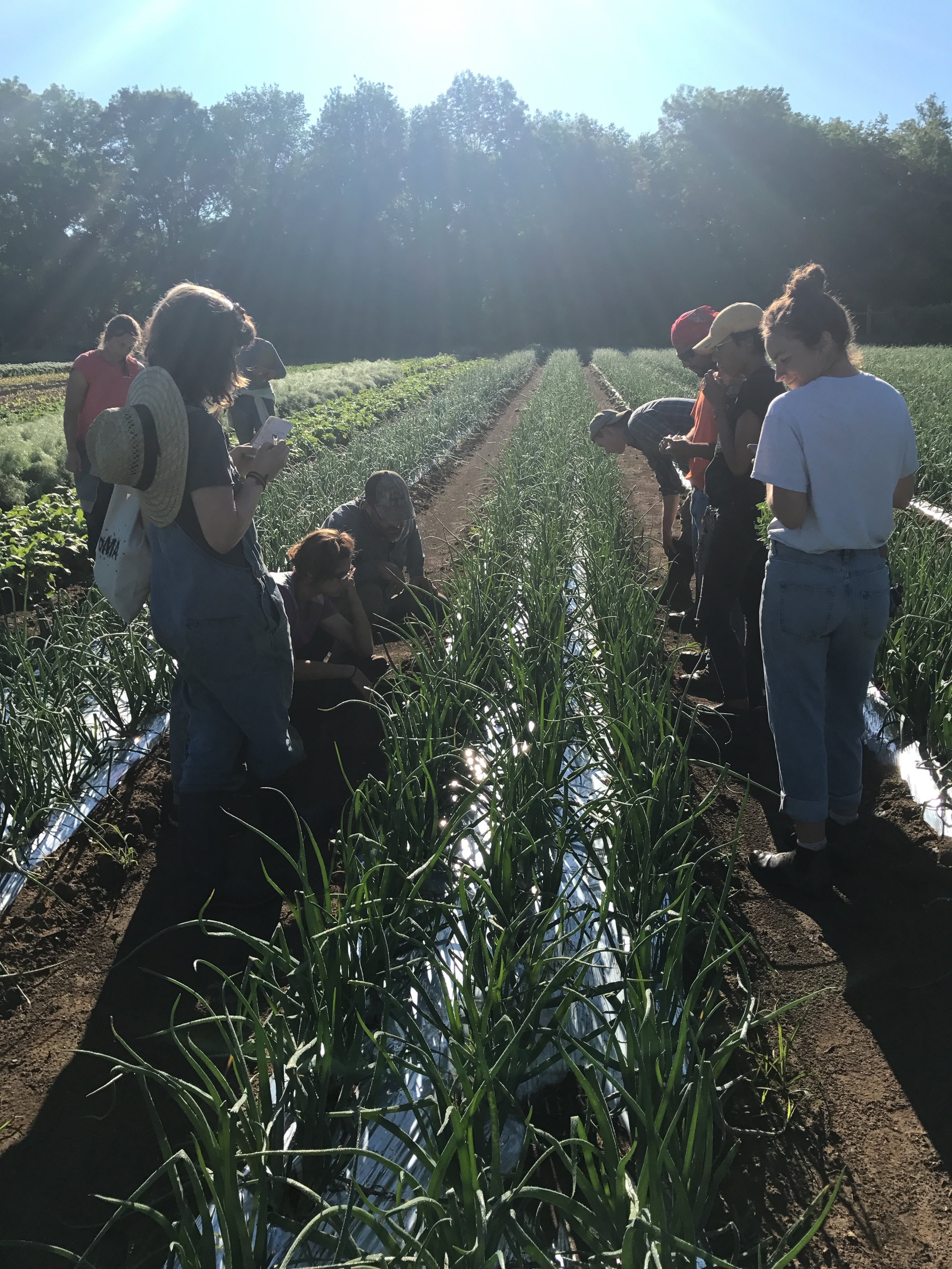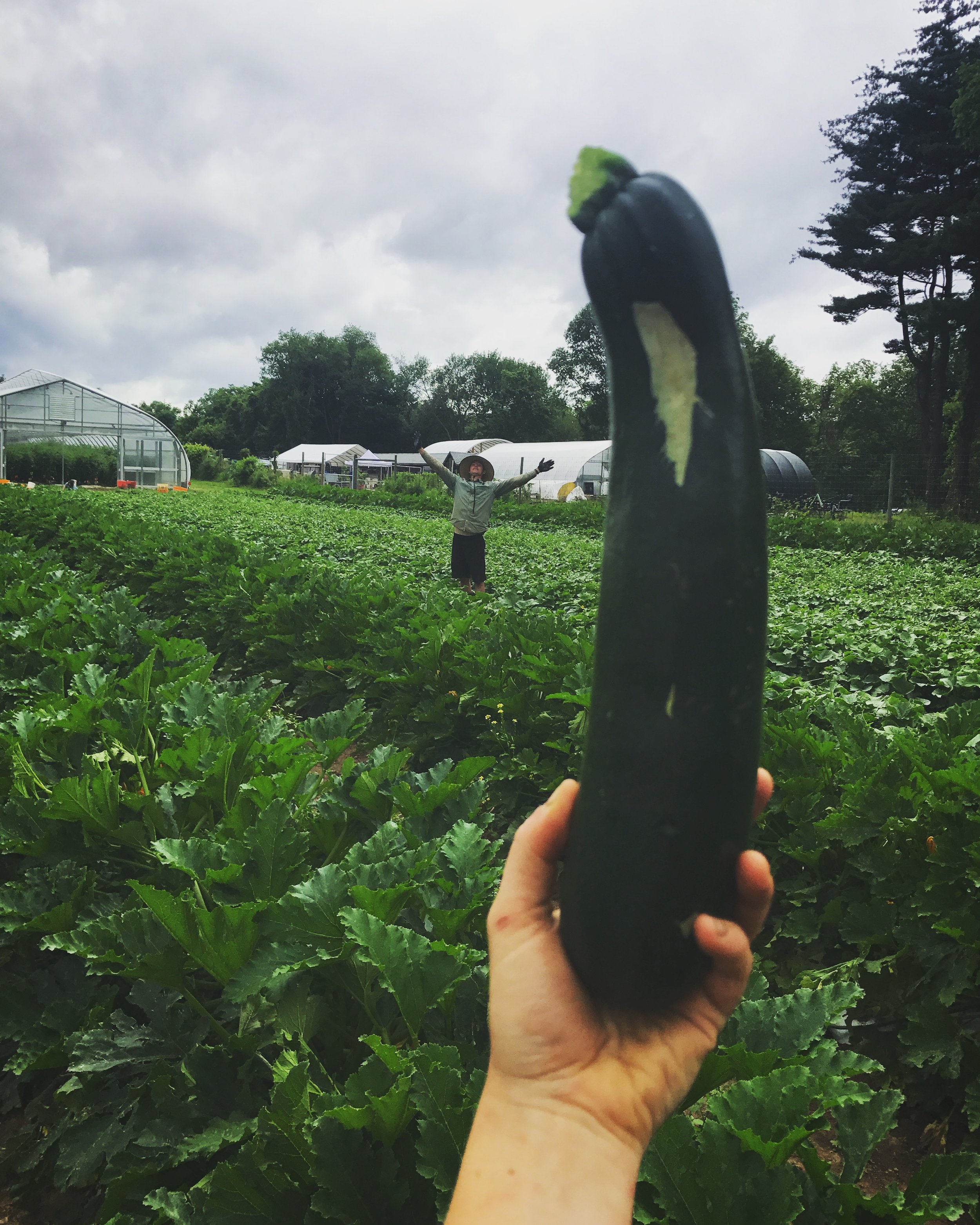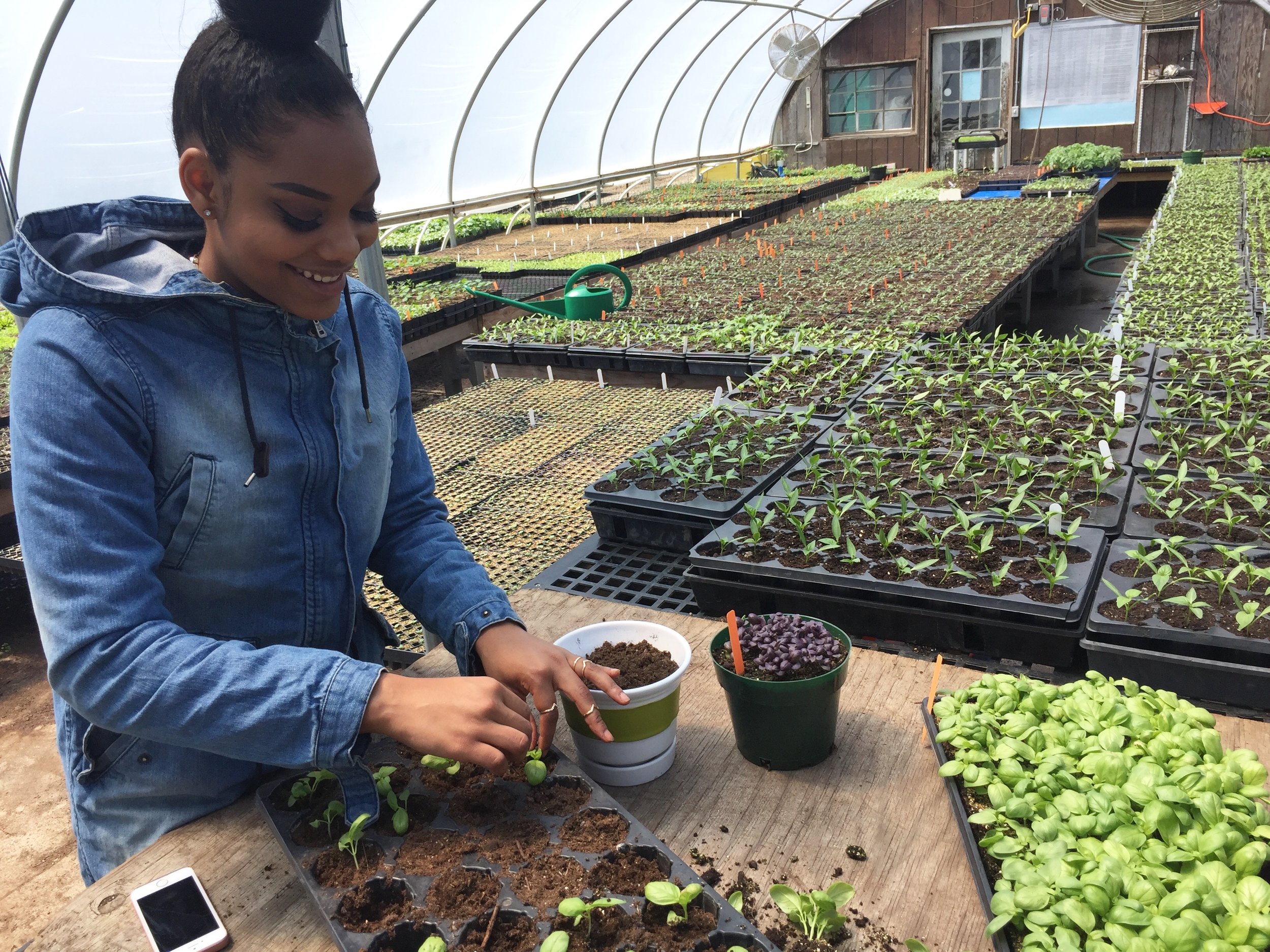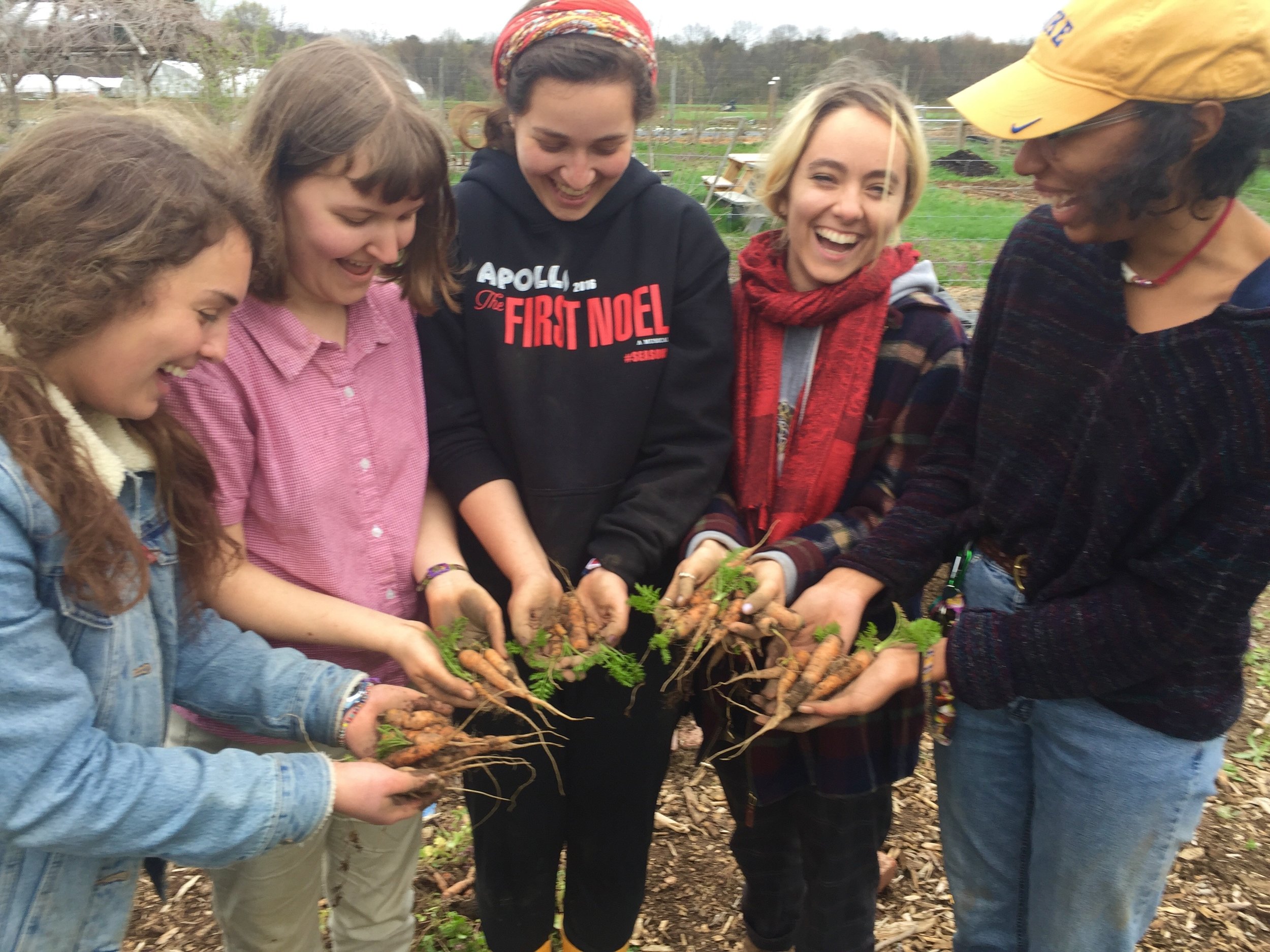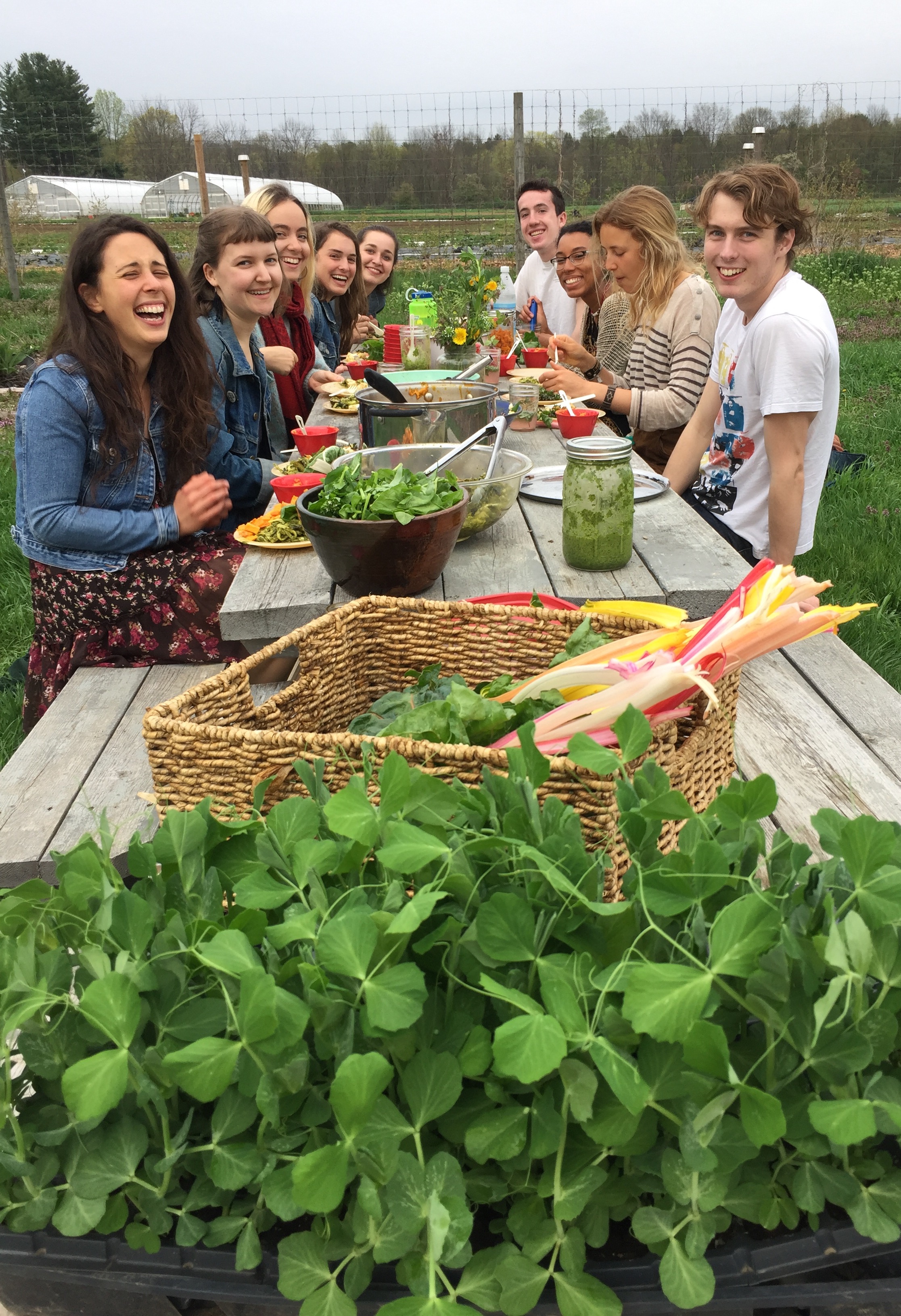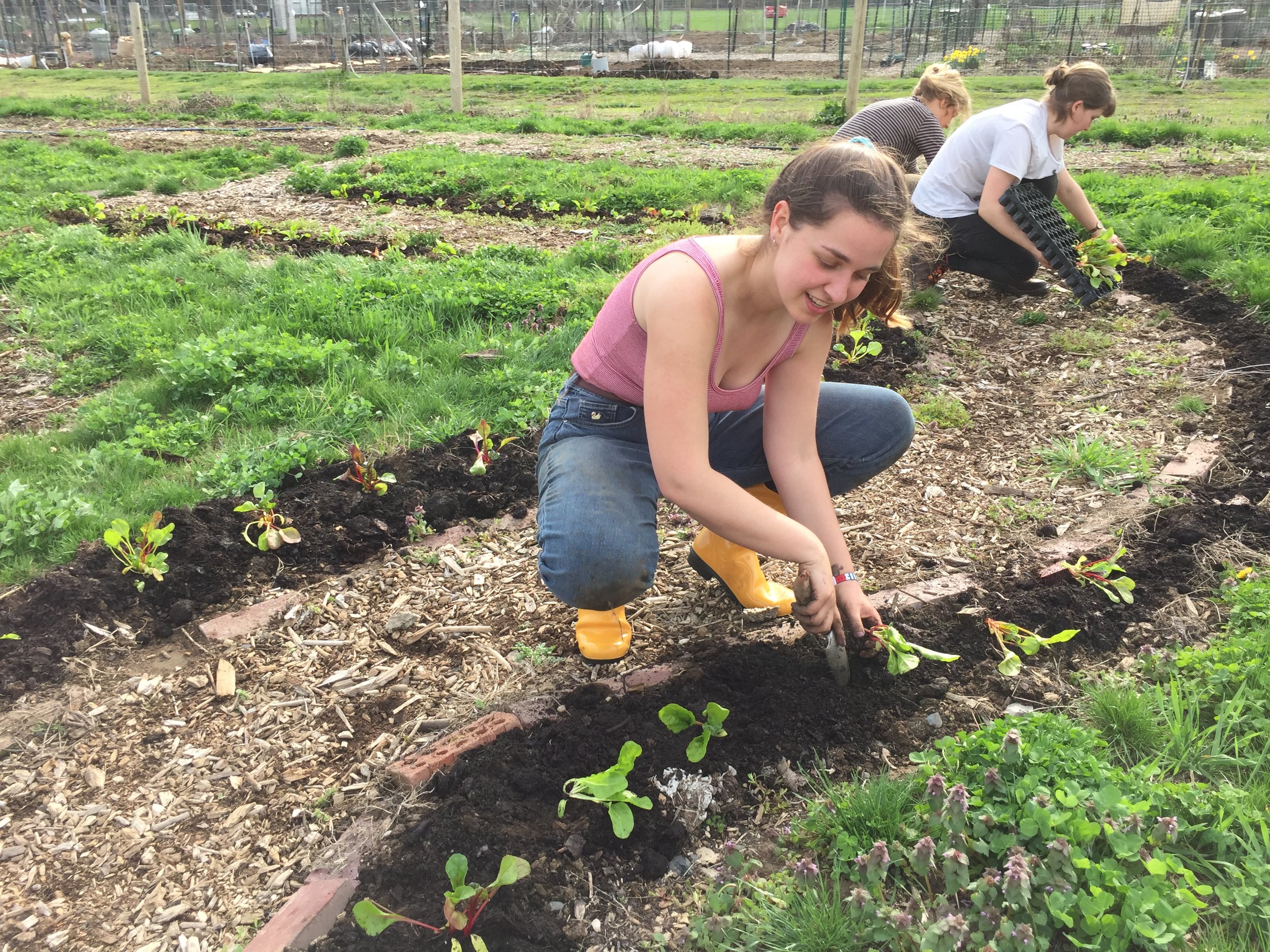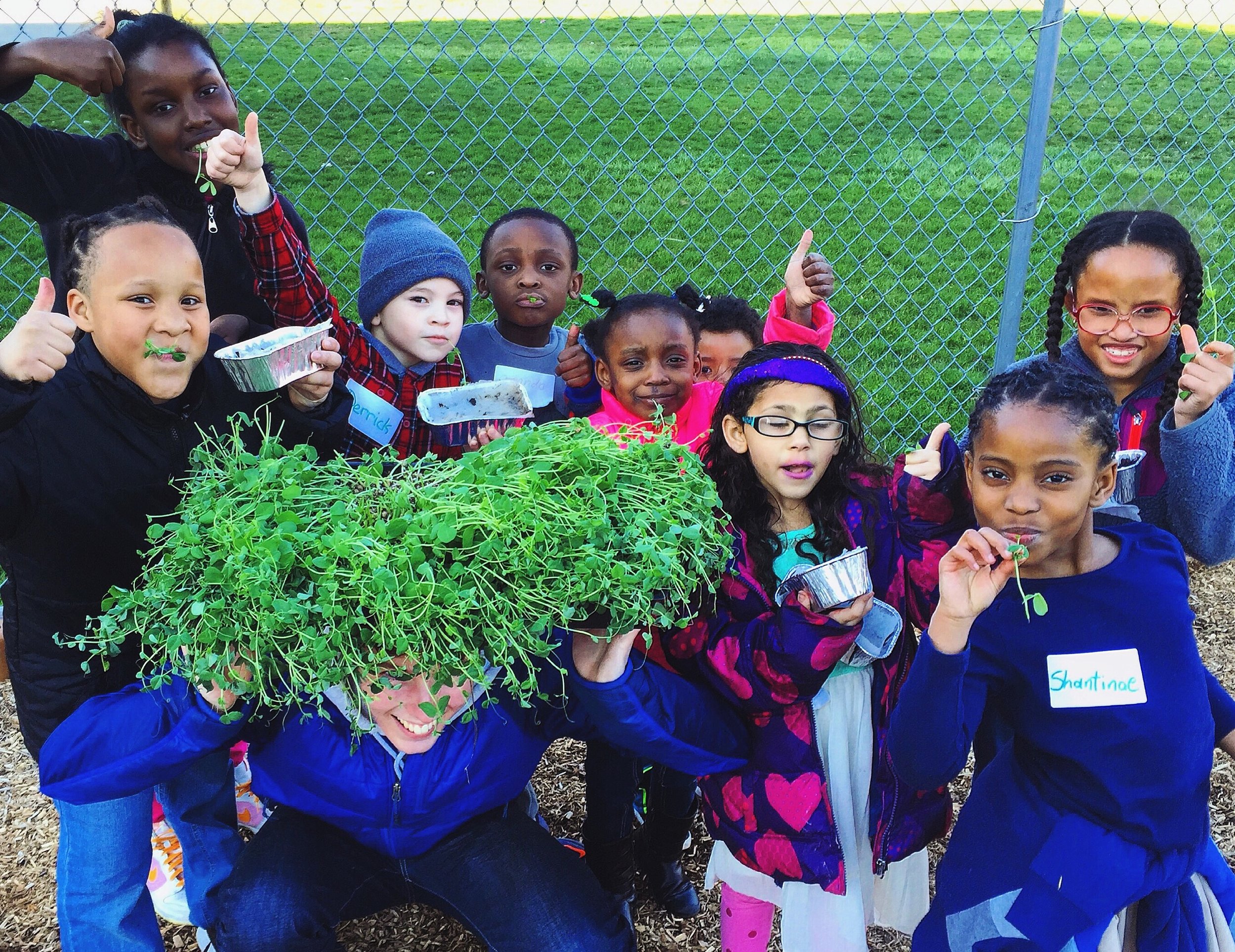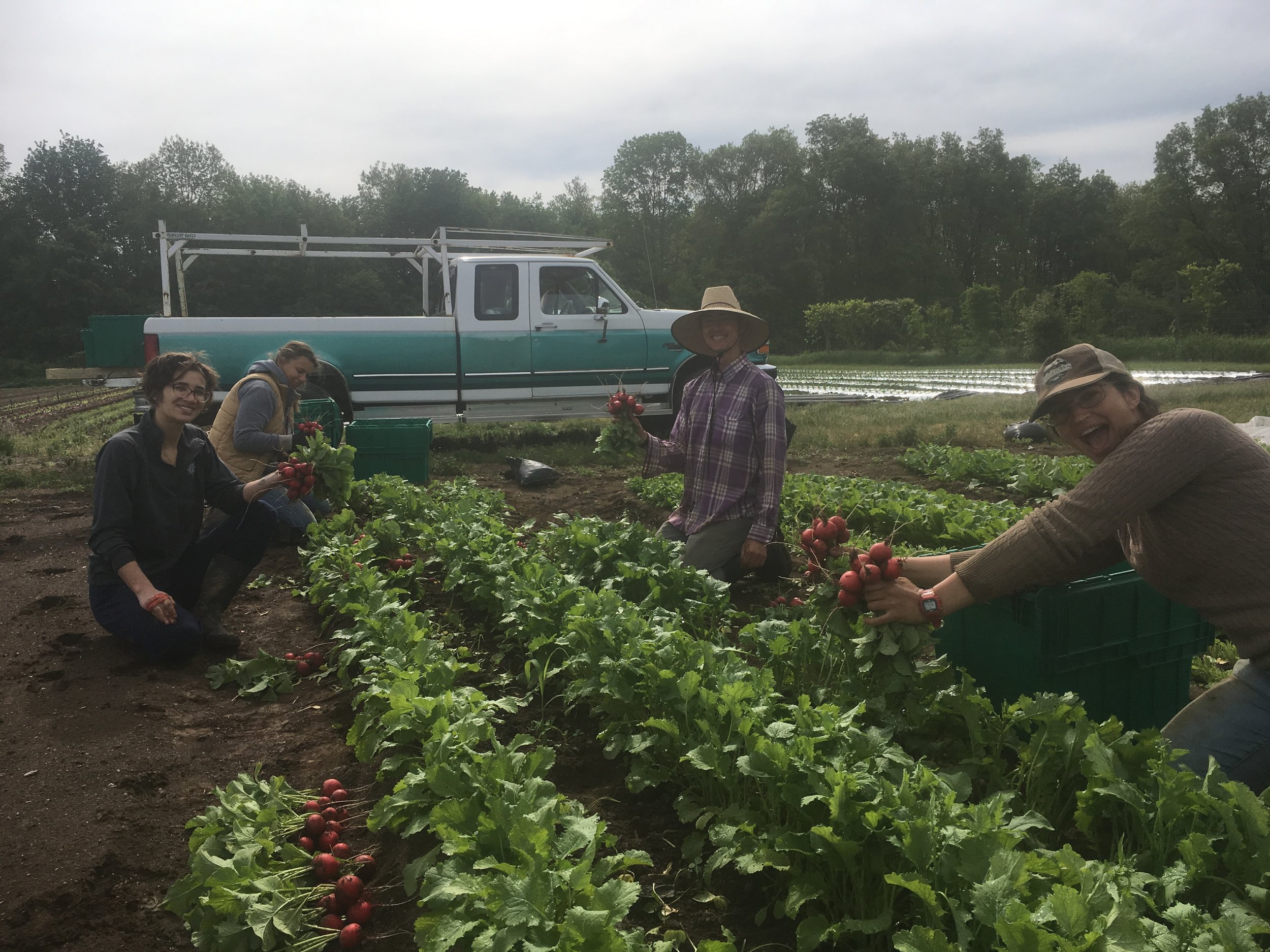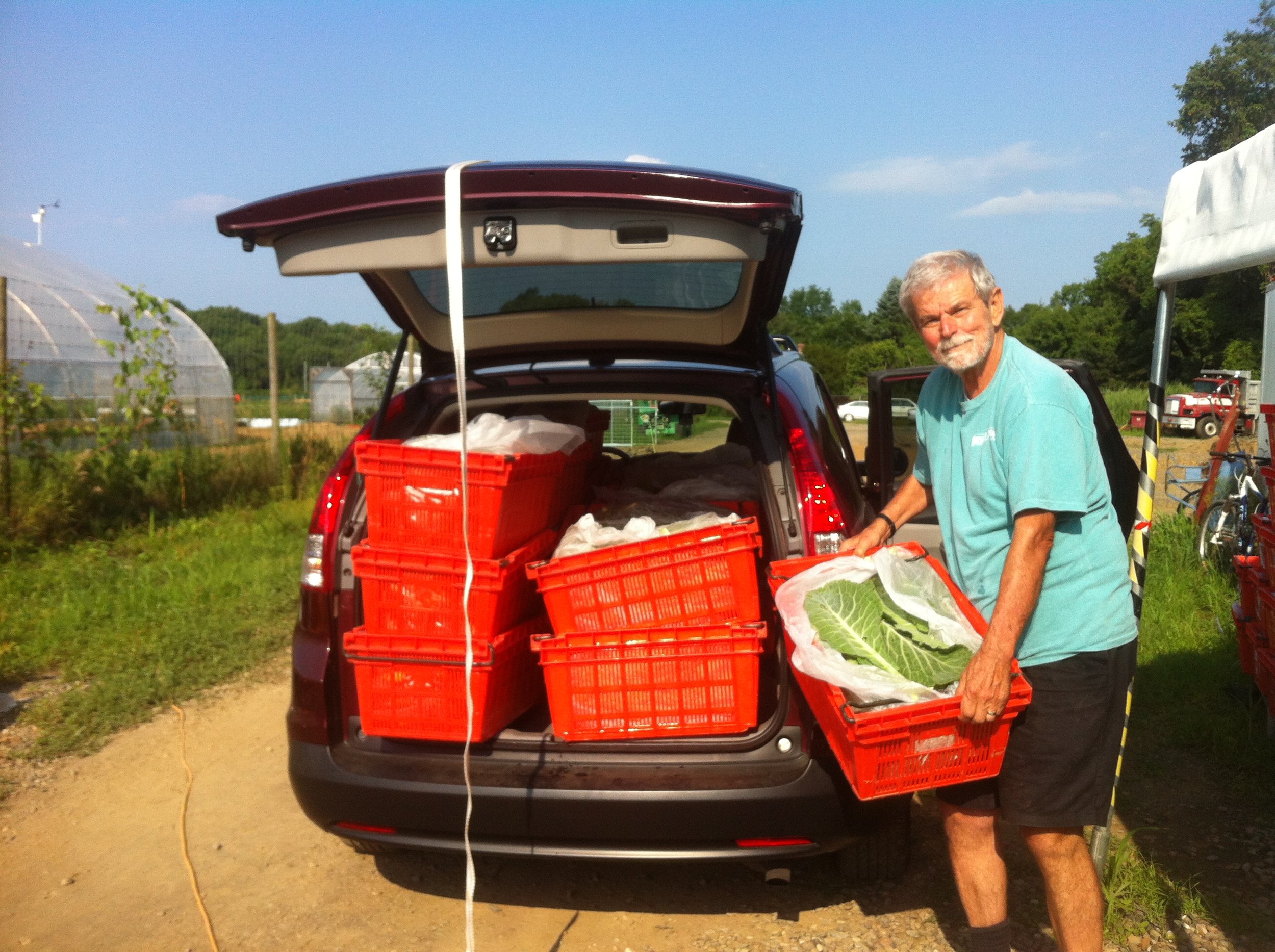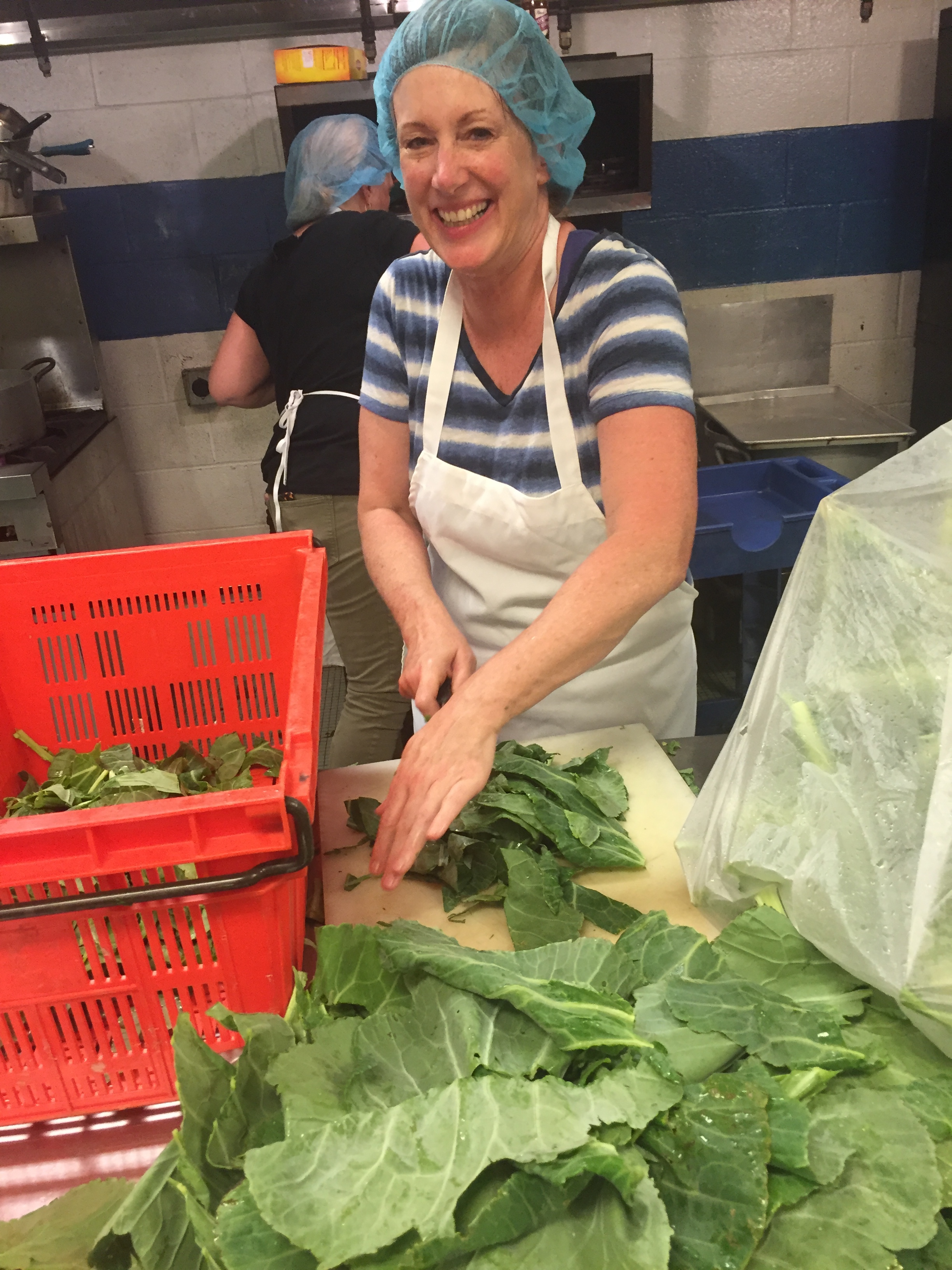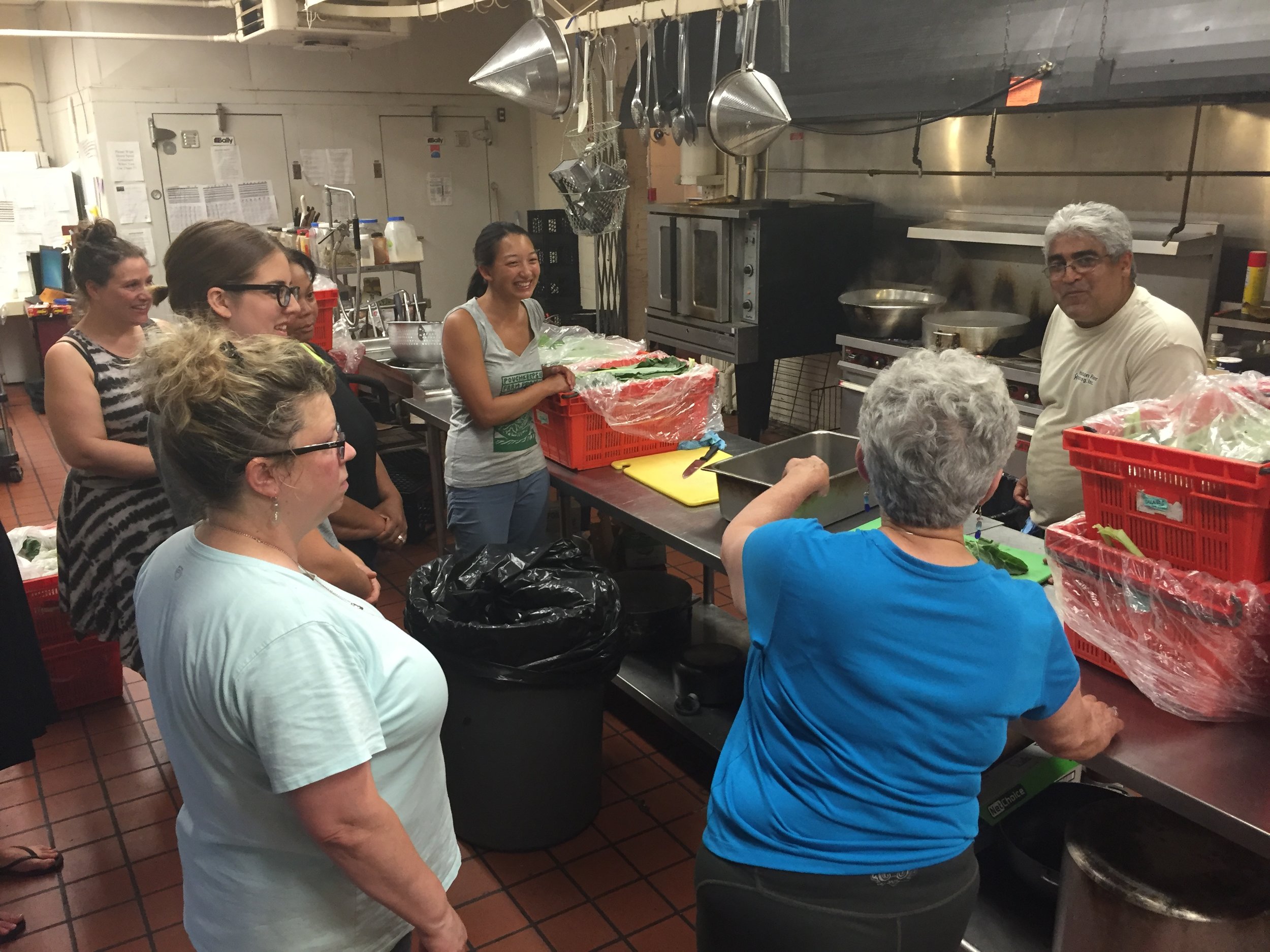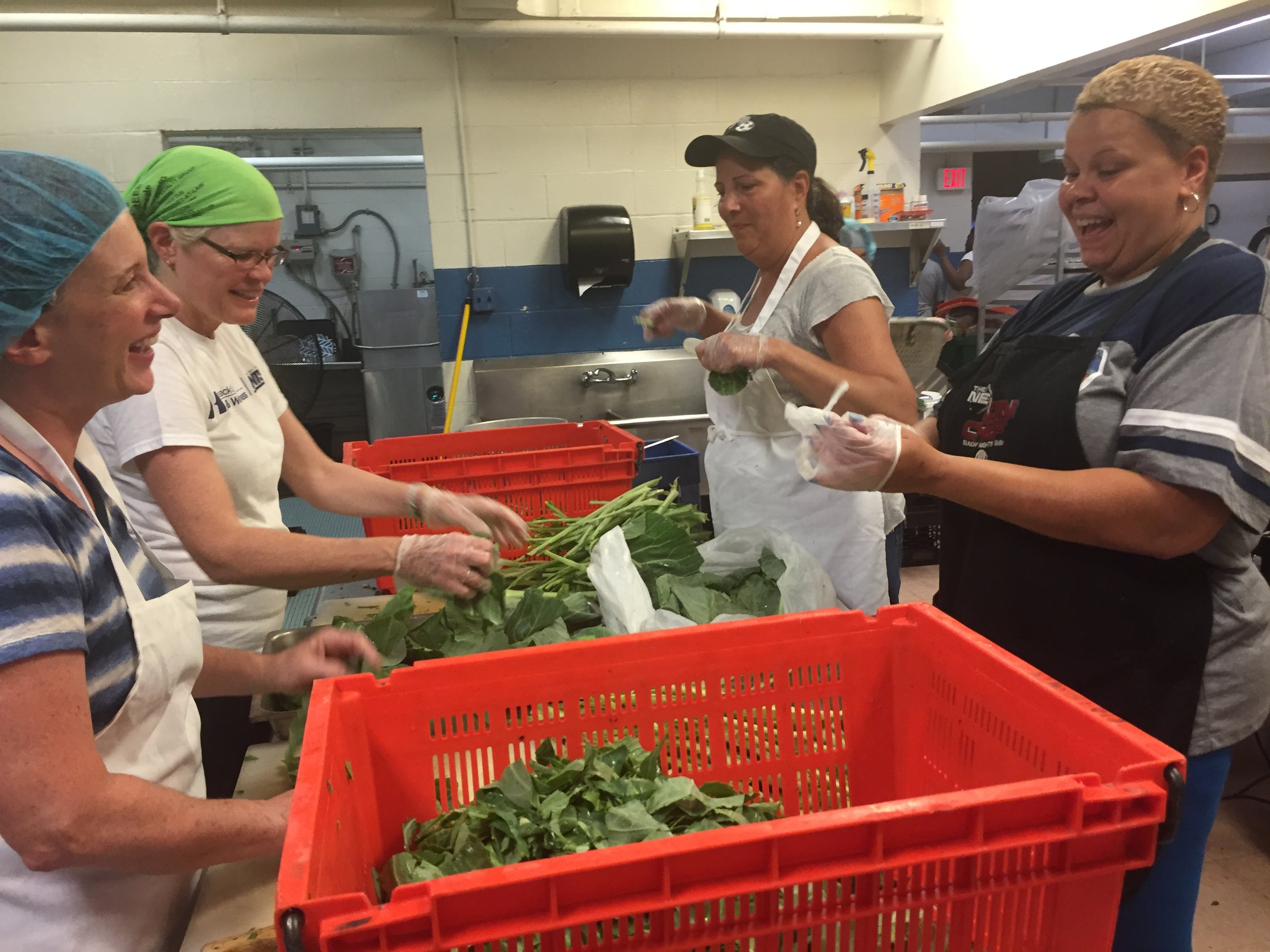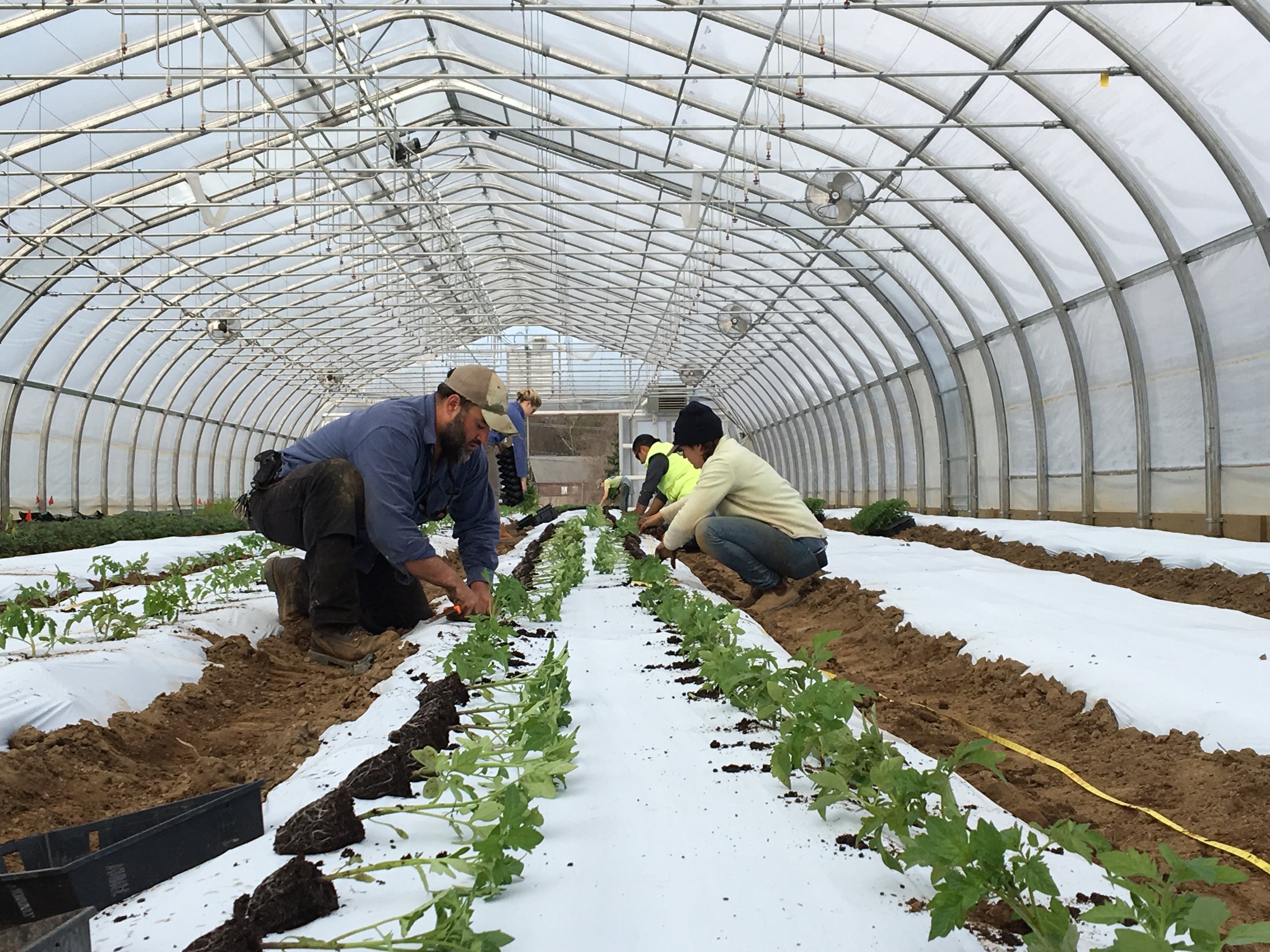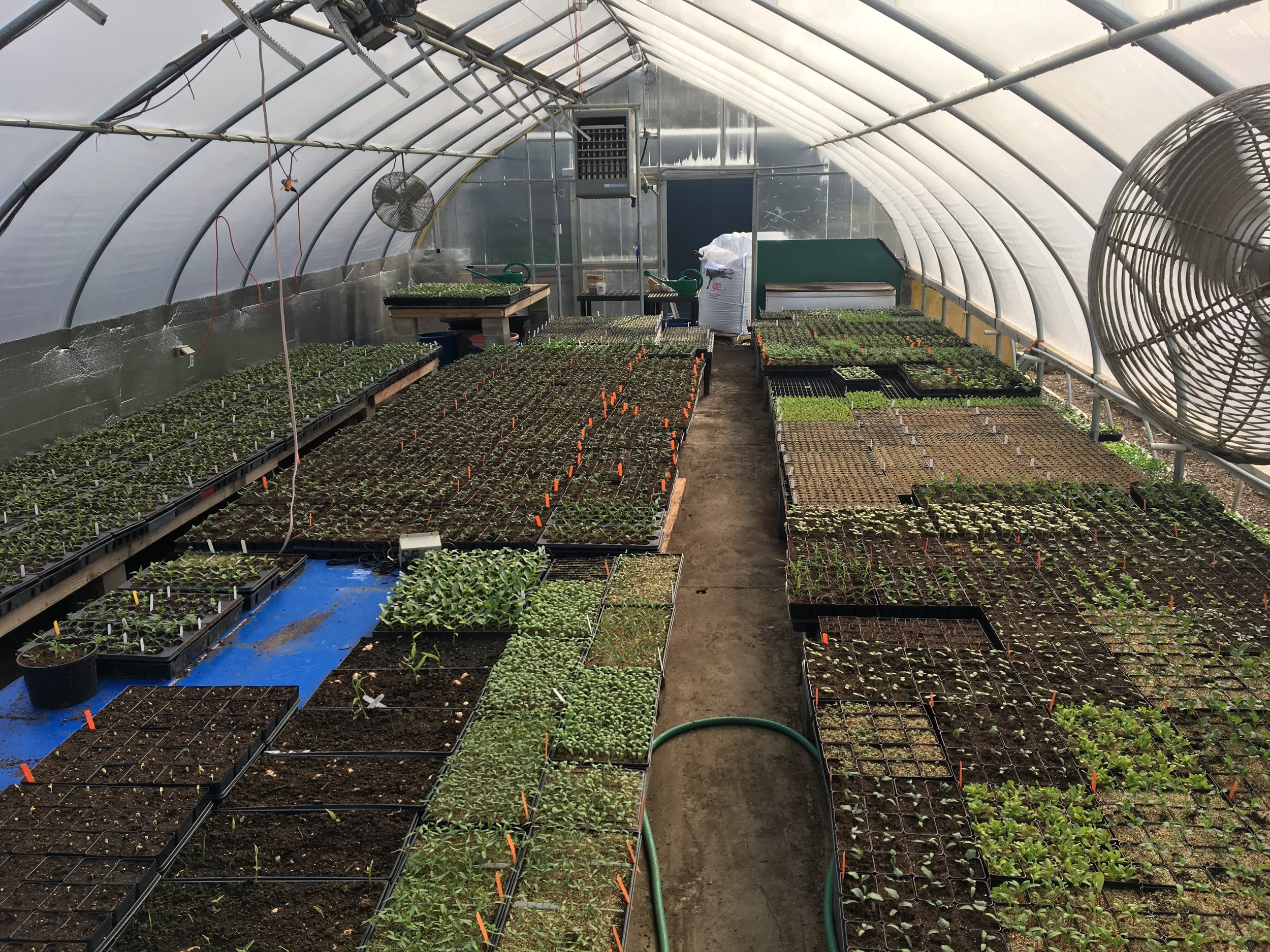By Sarah Moley
It was that first cool day of fall weather, cloudy, and we watched for the rain. Beatrix Clarke, our resident herbalist, had me peeling the onion we were going to have everyone chop up for their fire ciders. She peeled the garlic. We waited until everybody arrived, and then we all introduced ourselves and, as Beatrix asked of us, told something we knew about herbalism. While the answers were varied, they all had to do with alternative options for healing. The power of herbs. This is something I’ve found a lot of people feel. We are still captivated in this modern world by the plant’s ability to heal and protect. Beatrix talked about how, in medieval times, they would salt pack meat with herbs—herbs because everyone would get sick off of the meat otherwise—herbs were the best way to kill the germs.
Today, this tradition coupled with the ability of herbs to make certain foods more easily digestible—rosemary for lamb, sage for poultry, both digestive herbs in this sense—makes herbs a staple in most kitchens. A practice that, with centuries of proof behind it, we no longer question the why; why certain herbs go best with certain foods, how much culinary herbal knowledge we actually do possess, without needing an explanation. However, with modern medicine evolving farther and farther outside of the farm and garden, even in an herbal group, we are shy to stake our own claims about how herbs have healed us or helped us to prevent the need for healing in the first place, helped us stomach life’s problems—outside of the kitchen. But today, we are in a tincture kitchen, underneath an outdoor tent, steps away from the herb garden.
Next, we go on an herbal walk. Only ten herbs. That’s best for the memory, Beatrix says. First, Beatrix stops right inside the gate, “Careful of the nettles!” I warn. Of course, this is exactly what Beatrix wants to show everyone. The power of nettles. “Really good for you, you can use them like spinach.” I add as we walk, “Make sure to sauté or steam them first!” repeating something Beatrix had told me before when I was skeptical of eating nettles myself. A simple solution used to temper their sting.
Then we picked Ricolla Mint for our digestive tinctures. “Five leaves, or more—if you want more.” As Beatrix would tell everyone later, “Tincturing is an art, not just a science.” However, it is an art that requires the scientific categorization of herbs as a base; you have to know what you’re working with before you test age-old recipes. There’s a reason some combinations are tried and true; this form of medicine has been around for a long time. A weak sage tea is good for the stomach, a strong sage tea makes a good gargle for sore throats—but could wreak havoc on your stomach functions for that day. Herbs are like anything else, good in their proper amount. However, it would be difficult to land yourself in big trouble due to herb use, except, in extreme cases, as Beatrix mentioned next with the comfrey. “Comfrey is a wonderful herb, but has recently been blacklisted thanks to some woman who drank a gallon of comfrey extract and ended up in the hospital.” Think about it; imagine drinking a gallon of any kind of extract—like vanilla extract, for instance. The sheer amount she consumed is unbelievable. Beatrix continues, “So we have to make sure to plant it. An act of defiance now.” To this everyone chuckled, but took note.
We kept walking, even as a couple raindrops broke on us. “Parsley tea for UTIs; the problem with cranberry juice is all of that sugar. The cranberry makes you slippery so the bacteria slips out, but sugar. Grows bacteria. Parsley is better. No sugar.” We get to the herb wheel. She points out a marshmallow plant, the calendula we use for our PFP salves, and lastly, we pass around some Tulsi, or holy basil, to smell. It smells heavenly; wonderfully heady; like the panacea (or cure-all) it is.
Then, we head back into the tent to start working on our tinctures, mint leaves in hand. We all split up into assigned groups at three different stations. Beatrix explains the process for each one before we begin. When talking about the digestive tincture, Beatrix tells us, “Now, for a while at first, you’re going to want to give it a shake, everyday. And talk to it. Tell it good things, ‘you’re a good tincture, you’re going to make my tummy feel better’” Everybody chuckles, “you know, stuff like that. And, I’m serious because—they did a study, studied frozen water crystals—the crystals when you wrote something like ‘love’ on the outside, they froze into these, transformed, beautiful structures.” I remembered listening to a tape of this talk in the car on the way to school everyday in fifth grade. My mother, also an herbalist, loved the science behind the effect of positive words on water cells. We humans carry a lot of water with us. There is something undeniably good about ingesting herbs to heal, relax, or digest. We feel good about it. I think there’s something to that.
Beatrix sends me to boil water for the glycerin tincture. In this workshop she is teaching us how to make three different kinds of tinctures: a digestive tincture with an alcohol base, a relaxing tincture with a glycerin base (good for kids), and a fire cider with an apple cider vinegar base. She explained at one point that “fire cider” is the name for an age-old tonic that has, just recently, been copyrighted by one company. “Us herbalists have to fight back,” she says, “They’re saying we can no longer use this term. Just think of that!”
When I return the tent smells rich with seeds that have been bruised in a mortar and pestle, roots that have been chopped or grated, leaves that have been cut fine. I start with the glycerin tincture. Pouring the hot water over the chamomile and fennel on a cool day is instantly relaxing. We switched stations, giving everyone time to compose one of each kind.
When we were done, we talked for a bit, people asked questions about specific health concerns, garden concerns, “I have too much comfrey,” someone said, to which I replied, “You can turn comfrey into a compost tea if you’ve used all you want to use for other things; you can chop it up, let it stew in water until it gets smelly, and then put it right back into your garden.” Others asked about lyme disease, a woman’s child had been diagnosed this summer; Beatrix replied, “Artemisia annua is a good one for spirochetes; make a tea. In addition to everything else you’re doing…” After more questions like these, we parted ways. Since the workshop, we’ve had eager new volunteers in our Meditation Garden, hungry for Beatrix’s herbal knowledge. And she has more than enough to spare. “We talk about all kinds of things during our workdays; anyone can come,” I say, “And not just herbs!” Beatrix and I laugh. As we made our way out of tent, everyone looked happy, heading home, toting their new tinctures, I imagined them thinking, ‘you are good tinctures; you’re going to make me feel better.’
***It's not too late to register for any or all of the remaining herbal home remedy classes with Beatrix! To learn more and register for a class, go here.***












